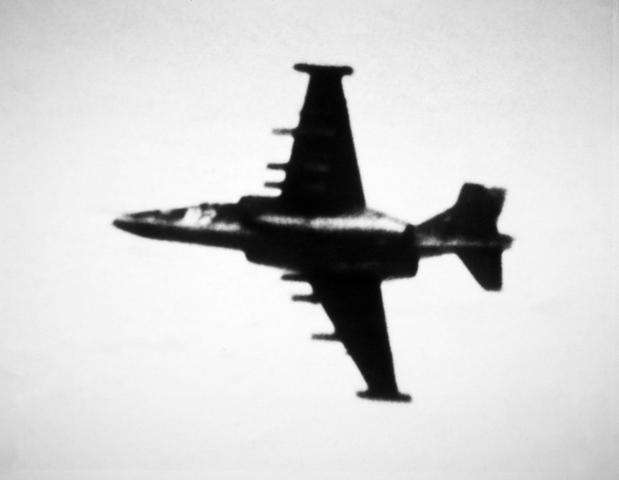Oli niistä Wikipediassakin (https://en.wikipedia.org/wiki/Battle_of_Jutland) jotakin:Kiitän.
Itsellä on kirjahyllyssä G. von Schoulzin teos Englannin Suuri Laivasto maailmansodassa. Hänhän oli mukana Skagerrakissa, ja kuvaa kuinka taistelulaiva, jolla palveli, sai torpedo-osuman kylkeensä. Hercules se ei ollut, ei nyt ota mieleen
Kiinnostanut hävittäjien osuus jo tuonkin kirjan nojalla. Siinä on melko karuja kertomuksia sen kokoluokan alusten pärjäämisestä Pohjanmeren hyisissä myrskyissä. Joku taisi menettää komentosiltansakin ja siellä olleet talvimyrskyssä.
At 16:30, Scheer's leading battleships sighted the distant battlecruiser action; soon after, HMS Southampton of Beatty's 2nd Light Cruiser Squadron led by Commodore William Goodenough sighted the main body of Scheer's High Seas Fleet, dodging numerous heavy-calibre salvos to report in detail the German strength: 16 dreadnoughts with six older battleships. This was the first news that Beatty and Jellicoe had that Scheer and his battle fleet were even at sea. Simultaneously, an all-out destroyer action raged in the space between the opposing battlecruiser forces, as British and German destroyers fought with each other and attempted to torpedo the larger enemy ships. Each side fired many torpedoes, but both battlecruiser forces turned away from the attacks and all escaped harm except Seydlitz, which was hit forward at 16:57 by a torpedo fired by the British destroyer HMS Petard. Though taking on water, Seydlitz maintained speed. The destroyer HMS Nestor, under the command of Captain Barry Bingham, led the British attacks. The British disabled the German torpedo boat V27, which the Germans soon abandoned and sank, and Petard then torpedoed and sank V29, her second score of the day. S35 and V26 rescued the crews of their sunken sister ships. But Nestor and another British destroyer – HMS Nomad – were immobilised by shell hits, and were later sunk by Scheer's passing dreadnoughts. Bingham was rescued, and awarded the Victoria Cross for his leadership in the destroyer action.[57]
(- - -)
At 17:33, the armoured cruiser HMS Black Prince of Arbuthnot's squadron, on the far southwest flank of Jellicoe's force, came within view of HMS Falmouth, which was about 5 mi (4.3 nmi; 8.0 km) ahead of Beatty with the 3rd Light Cruiser Squadron, establishing the first visual link between the converging bodies of the Grand Fleet.[69] At 17:38, the scout cruiser HMS Chester, screening Hood's oncoming battlecruisers, was intercepted by the van of the German scouting forces under Rear-Admiral Boedicker.[70]
Heavily outnumbered by Boedicker's four light cruisers, Chester was pounded before being relieved by Hood's heavy units, which swung westward for that purpose. Hood's flagship HMS Invincible disabled the light cruiser SMS Wiesbaden shortly after 17:56. Wiesbaden became a sitting target for most of the British fleet during the next hour, but remained afloat and fired some torpedoes at the passing enemy battleships from long range. Meanwhile, Boedicker's other ships turned toward Hipper and Scheer in the mistaken belief that Hood was leading a larger force of British capital ships from the north and east. A chaotic destroyer action in mist and smoke ensued as German torpedo boats attempted to blunt the arrival of this new formation, but Hood's battlecruisers dodged all the torpedoes fired at them. In this action, after leading a torpedo counter-attack, the British destroyer HMS Shark was disabled, but continued to return fire at numerous passing enemy ships for the next hour.[71]
(- - -)
Simultaneously, the disabled British destroyer HMS Shark fought desperately against a group of four German torpedo boats and disabled V48 with gunfire, but was eventually torpedoed and sunk at 19:02 by the German destroyer S54. Shark's Captain Loftus Jones was awarded the Victoria Cross for his heroism in continuing to fight against all odds.
(- - -)
From 23:20 to approximately 02:15, several British destroyer flotillas launched torpedo attacks on the German battle fleet in a series of violent and chaotic engagements at extremely short range (often under 0.5 mi (0.80 km)).[108] At the cost of five destroyers sunk and some others damaged, they managed to torpedo the light cruiser SMS Rostock, which sank several hours later, and the pre-dreadnought SMS Pommern, which blew up and sank with all hands (839 officers and men) at 03:10 during the last wave of attacks before dawn.[108] Three of the British destroyers collided in the chaos, and the German battleship SMS Nassau rammed the British destroyer HMS Spitfire, blowing away most of the British ship's superstructure merely with the muzzle blast of its big guns, which could not be aimed low enough to hit the ship. Nassau was left with an 11 ft (3.4 m) hole in her side, reducing her maximum speed to 15 knots (28 km/h; 17 mph), while the removed plating was left lying on Spitfire's deck.[109] Spitfire survived and made it back to port.[110] Another German cruiser, Elbing, was accidentally rammed by the dreadnought Posen and abandoned, sinking early the next day. Of the British destroyers, HMS Tipperary, Ardent, Fortune, Sparrowhawk and Turbulent were lost during the night fighting.


 .
.







